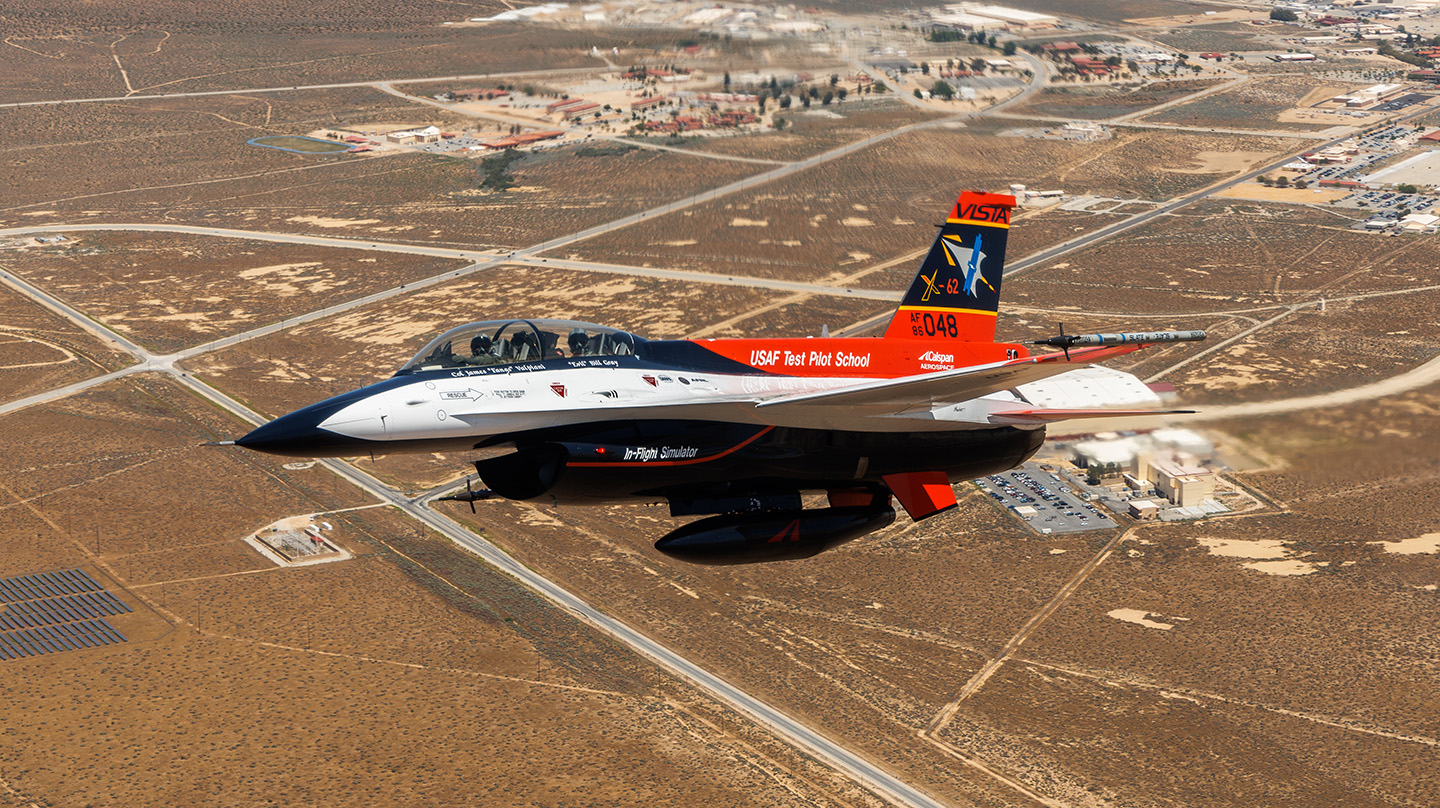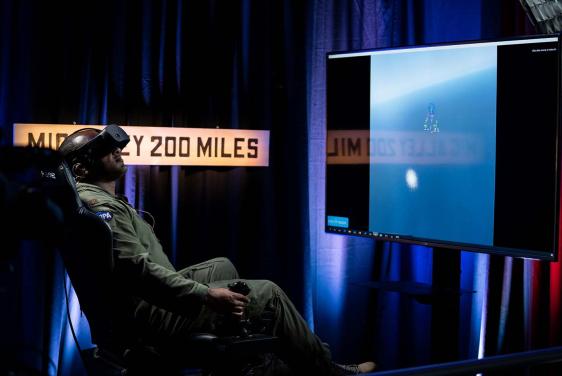Press Release
Johns Hopkins APL Contributes to Air Force Secretary’s Successful AI-Guided Fighter Jet Flight
In a show of how far the Defense Advanced Research Project Agency’s (DARPA) Air Combat Evolution (ACE) program has come in its goal of integrating artificial intelligence (AI) into combat scenarios — and increasing trust in this level of autonomy — the Secretary of the Air Force gamely strapped into the cockpit of an AI-piloted F-16 fighter jet and prepared for takeoff.
The team behind ACE, which includes the Johns Hopkins Applied Physics Laboratory (APL) in Laurel, Maryland, the Air Force and other industry partners, had been actively preparing for the monumental May 2 flight since April — running a battery of tests to prepare for what promised to be another historic first for the program.
ACE has made significant leaps in the last few years. Last September, for the first time ever, ACE’s AI algorithms autonomously flew an F-16 against a human-piloted F-16 in a simulated “dogfighting” scenario, an aerial battle between fighter aircraft at close range. APL-developed algorithms commanded the X-62A, a modified F-16 test aircraft also referred to as VISTA (Variable In-flight Simulator Test Aircraft), at the Air Force Test Pilot School at Edwards Air Force Base, California, in the lead-up to the flight.
To ensure success in the flight test program and enable easy integration of multiple-agent designs, APL developed the ACE Distributed Operations Manager (ADOM) framework, which is integrated into the X-62A VISTA. ADOM provides the necessary and enabling capability that integrates and tests the AI agents contributed by all ACE partner performers with the X-62A in simulated dogfights, explained APL’s Mike Avera, ACE program technical lead.
“Without ADOM, the AI agents can’t fly the X-62A,” said Avera.
For every ACE flight test since late 2022, the APL team has coordinated the many component changes from contributing teams — including agents, test points, network constraints, control laws, software onboard the X-62A and more —in an effort to hone the system and collect valuable data.
“Throughout each flight test, APL has refined the ADOM capability to support more efficient and reliable test execution. Our continued development has enabled the ACE team to collect more data and further improve the proficiency of the autonomy under test,” said APL’s Billy Gallagher, ADOM software lead.
In building this framework, the APL team successfully conducted essential testing, developed simulated weapons models, implemented training rules and safety protocols, and established communication links to connect all components. This ensured that both pilots and the ground test team had clear situational awareness throughout the process. Ahead of the flight, the team monitored safety and training rules in the software, testing efficiencies and identifying any possible issues in advance.
“APL is proud to advance the technology enabling AI to fly the aircraft and to work with the many teams involved to push this program toward success,” said Avera.
APL has served as a core member of the ACE team since the 2020 AlphaDogfight Trials, a virtual showdown between eight AI research teams from across the United States. In the trials’ final round, the winning AI agent went 5-0 against a U.S. Air Force F-16 pilot. APL developed the simulation environment and adversary algorithms for the competition, allowing the industry agents to train similarly to actual pilots.
In subsequent phases of the project, APL continued to enhance the virtual environment and AI algorithms to create more evolved dogfighting scenarios. Follow-up scrimmages used more challenging AI algorithms and simulated sequences, pushing teams to engage in more sophisticated scenarios, like 2-v-1 fights. APL further honed the AI software that would eventually be loaded into VISTA, enabling multiple flights and effectively demonstrating that AI agents could indeed control fighter jets.
In just four years, the APL-developed AI algorithms have quickly advanced from controlling simulated F-16s in aerial combat to commanding an actual aircraft in flight. And the latest test underscores the growing capabilities of this cutting-edge technology.
“It is exciting to see how far we have come in just a few short years,” said Tom Urban, supervisor of APL’s Intelligent Combat Platforms Group. “We began this work in 2018 with several internally funded research efforts. Since then, and with support from several collaborators, we have matured the technology and demonstrated the potential AI has to revolutionize air combat.”
With capabilities in software development, AI development, modeling and simulation, and aircraft dynamics and controls, APL remains a trusted agent in the development of the AI technology behind ACE and the testing to enable successful demonstration.
This most recent demonstration emphasizes that the technology can transition to real-world applications, Urban said, with uncrewed aircraft safely flying alongside crewed fighter jets to carry out missions in complex warfighting environments.
The ACE program is a collaborative effort between government, academia and private industry. Government partners include the Air Force Test Center, Air Force Research Laboratory, DARPA and the Air Force Test Pilot School. APL is an academic partner; industry partners include Calspan Corporation, Cubic Corporation, EpiSci, Lockheed Martin Skunk Works, Physics AI and Shield AI.

